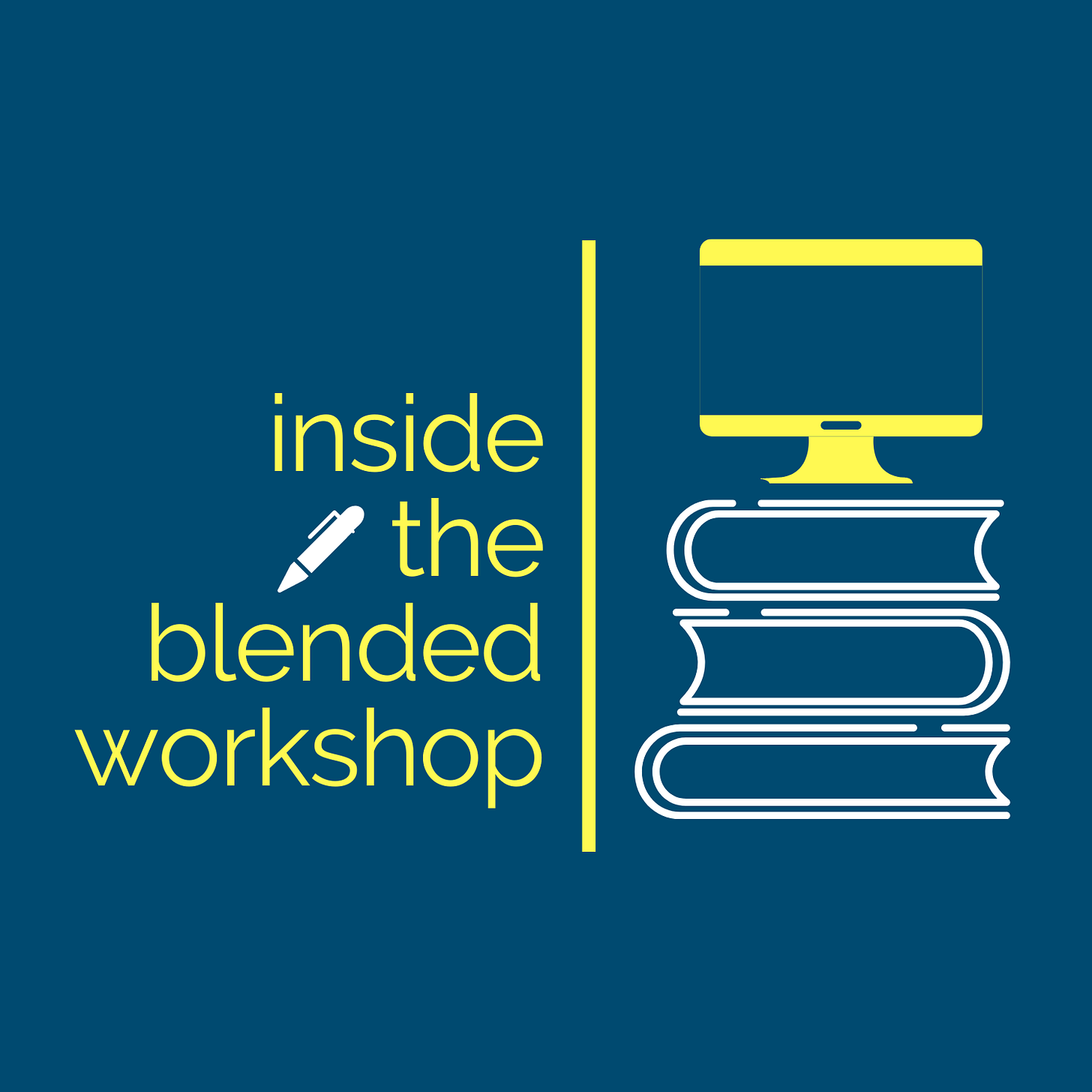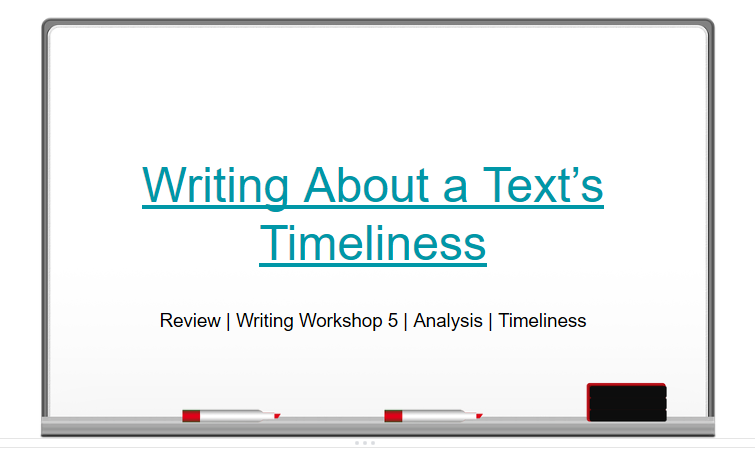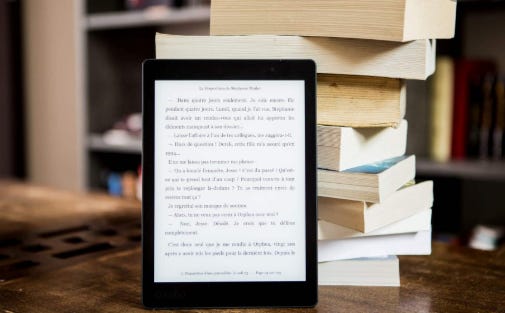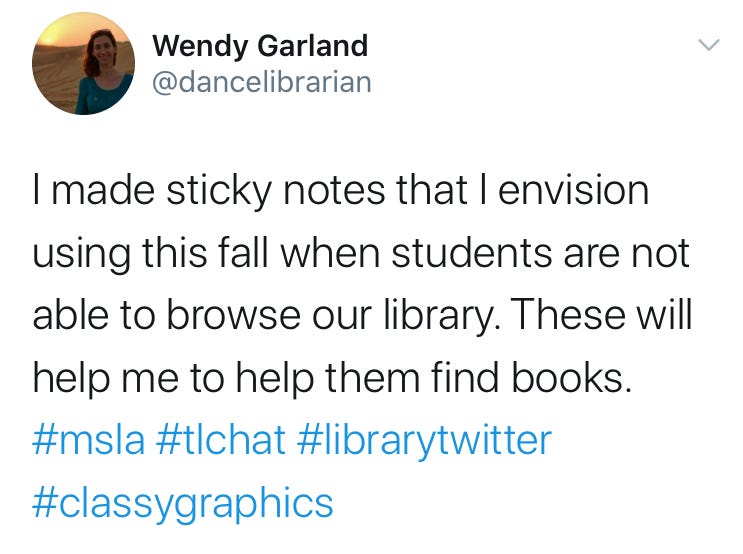
August 2020 | Issue 01
Welcome!
We are so glad you’re here! As we all begin to wade into the deep unknown of the 2020-2021 school year, we wanted to make a more intimate space where you could step inside our classrooms with us, have conversations about our new teaching realities, and work together to continue to do what’s best for the readers and writers in our classrooms — whether those classrooms are face to face, virtual, or something in between. And here we are: an online comunity that will give you new ideas, provide support and a sounding board for you, and, most importantly, put resources directly into your hands.
This month, in honor of Back to School madness, the newsletter and audio newsletter are free for everyone so you can give it a try!
In each issue, please comment with questions for our Q&A or topics you’d like to hear more about! Let us know what’s working for you and where you’re struggling!
DEEP DIVE: Using Digital Reading + Writing Notebooks

Name an English teacher who doesn’t love a good notebook. The brilliant glide of the perfect pen. While we are all becoming more digital, English teachers tend to be a tactile people. Loving paper — when writing, when reading — is one of our defining features.
But this year, my beloved, on-paper reading + writing notebook is going digital — and it’s going all-in-one. Let’s be honest, this school year is going to require us to kill some of our darlings. Here’s why I’m going digital from day one:
Minimizing paper minimizes sanitizing. We don’t need to worry about potential germs on notebooks we aren’t touching and passing back and forth.
My school is starting face-to-face but bracing for a likely pivot to full digital learning later this year. If we begin in digital notebooks, that’s one less thing we have to change later this year.
Both the teacher and the student can see the digital notebook anytime. It’s a great way for me to be able to casually monitor student work.
Catlin Tucker got me started on this journey, and, with some modifications, I am embracing her basic set up. Start here and she will show you how to format your Google Slides for digital notebooks and how to assign them to students through Google Classroom so that each student has his or her own copy that you can pop into at any time!
(This is important to me — popping in casually and without notice allows me to spot-check if students are keeping up with class without having to assign a grade to every informal writing assignment or reading reflection. In my real, normal-life classroom, I never collect or grade notebooks — it’s a matter of principle and practicality. This way, if I pop into a student’s notebook and see they are falling behind with assignments, I can quickly nudge them back on track. A little bit of accountability built in!)
Here’s the rub: Tucker uses a new notebook for each new unit. And she frontloads all of her resources in the notebook before sharing it with students. That won’t exactly work for me— I want my notebooks to stay with students all year long, and I want to responsively create flipped mini-lessons as I go.
Before we go on a tour, let me tell you my notebook plan:
Just about everything will go in this notebook, including but not limited to mini-lesson links (see Flipping the Mini-Lesson below!), notes, drafting and bits of informal writing, reflective writing, dialogue journals, vocabulary work, documentation of learning.
I’m including a User Guide filled with simple how-to screencasts will help students with the basics of digital notebook logistics and navigation. What basic functions will your students need to perform again and again in order to fully use this notebook? Find simple YouTube tutorials or quickly create your own and link! (Or feel free to link to mine!)
I will train students to insert slides with new mini-lessons from me. Whenever I teach a new mini-lesson, I will link to it in a single Google Slide. I will assign that slide to my students in Google Classroom, and they will insert it into their notebook in the appropriate section. More details on this below in Flipping the Mini-Lesson.
I will train students on how to perform effective searches to find notebook items. Yes, by the end of the year, this slide deck will be enormous. (But so, so useful! Think about what a resource this could be as students move from grade to grade!) So, from the get-go, I am going to explicitly train my students to think about embedding a keyword or two into each slide and then train them to perform a search so that they can quickly navigate around the notebook.
Shall we take a quick tour?
Click below for the Digital Reading + Writing Notebook Template (with User Guide videos to help students do the basics). It’s yours — just make a copy and adapt it to fit the needs of your students!
Flipping the Mini-Lesson
Another change I’m making to my class from day one regardless of how we begin the year is that I am going to start flipping all mini-lessons for both reading and writing workshop. I’ve been doing this for a few years so that reading/writing workshop can continue when I am absent and out of the classroom, but these days the benefits go far beyond a substitute’s lesson plan.
One thing that Spring 2020 taught me is that regardless of the teaching context, we have to make the most of face-to-face time. And one thing students can do on their own without me beside them is to receive my direct instruction. This saves face-to-face time for practicing reading and writing strategies, conferring, sharing, and other community-building.
Here’s how I flip lessons:
Record a 5-7 minute screencast using Screencastify or Screencast-O-Matic.
Both of these screen recorders have free options that work great — I’ve never needed to spend a dime to record a mini-lesson. Screencastify and Screencast-O-Matic both upload directly to Google Classroom, but they also upload directly to YouTube, which is my preferred upload spot. (I publish them as “unlisted” so that only the people I want to see my mini-lessons can actually see them!) In YouTube, you can then add your videos to playlists— making a one-stop-shop for all mini-lessons in a particular unit or on a particular topic. (You might have a playlist for your review-writing unit, but you might also have a playlist for every grammar mini-lesson. Click the button below for my unlisted digital notebook tools video playlist)
It may be tempting to leave your face off the screencast, but I strongly recommend going ahead, sucking it up, and embedding the webcam to show your face. Students need to see our facial expressions when we’re teaching. (And when some of us will be seeing students through masks next year, this is all the more important!) Let them see that it’s really you behind that computer screen.
Here’s my biggest tip for flipping lessons, though: record in one take. You will mess up. You will be awkward. You will want to re-record. DON’T DO IT. This will make the practice of flipping lessons completely unsustainable. Just like when you teach a lesson live, things aren’t perfect. In my videos, you’ll hear my children running around in the background. And while it pains me sometimes, I choose to say, “Oh well. That’s okay.” Give yourself the grace to be okay with that and make a deal with yourself from the outset that there will be no rerecording to get it just right.
Post Your Lesson.
This will be different for everyone depending on what platform or LMS your school is using. You can post to Google Classroom or Schoology or Seesaw or Loom; these possibilities are nearly endless. You can even just email it to your students with a due date in the subject line. So that students can pull the lesson into their digital notebooks and keep everything they need in ONE place, I am:
Creating a slide that links to my mini-lesson and adds some keywords to act as tags for easy searching:

Assigning that slide in Google Classroom. Homework will be to 1) Open the slide, copy it, and paste it in the digital notebook. 2) Watch the mini-lesson.
Assessing whether students have watched it by having a brief one-on-one or small group conversation in a conference asking them to show you this skill in action, using an entrance ticket in class to get a student’s takeaways, brief reflection in their dialogue journal.
Then, I will use our class time in my brick-and-mortar classroom or Zoom classroom to confer with students about their reading and writing, apply that knowledge together in some way, or give students time to read and write in front of me the way I have always done.
Getting students in the habit of watching a digital mini-lesson in advance of a class meeting will save me time, build independence, and ensure students always have that lesson in front of them to watch and re-watch as needed!
Building a Reading Community One Avatar at a Time

Last spring, I missed looking across a room of readers and seeing books. I once heard a wise teacher say that the most important part of our job is kid-watching, and looking at those book covers told me a lot. They told me who had sworn off YA, who was stuck in the eleventh book of a series, who had been about halfway through the same book for the last three weeks and needed help, who was into spy novels now, who was trying non-fiction for the first time. Without a single word, I could tell a lot about my readers. When we moved to emergency remote learning, I missed that instant readerly data.
Now, at least among my middle school crowd, one of the best things about meeting in Google Meets or Zoom is getting to make your friends laugh by changing your avatar. So, how about this as a way to build a community of readers while gaining some important data: ask students to change their Google Meets or Zoom avatar to a screenshot of the book they are currently reading.
This could be a simple, fun way to display what each student is reading, but you might also consider…
Ask everyone to turn off their videos to create a visual quilt of book covers. It might even be fun to screenshot it to track what the class is reading over time or to share with families.
Begin or end class by asking one or two students to briefly share about the book they are currently reading.
Getting (e-)Books in Students’ Hands

Photo Source
If your student has any kind of Internet device, you can get them set up for free e-books from your public library!
Get each student an e-card for your local library.
Some students may already have public library cards, and can use those! But students who don’t yet have a library card can probably get one online. These days, most libraries will do this online without you even having to go pick up a card. (My five year old got his first library card this way last week!) And these e-cards entitle you to check out e-books!
If this proves impossible, consider setting up an e-card just for your students’ use — a class e-card, if you will. You give them the e-card login credentials, and they use it to check out books. Since the books automatically return, there is no fear of library fines.
Have each student download a Kindle Cloud Reader app.
I begged my technology director to auto-install this on every student’s Chromebook since we are 1:1. But if you aren’t 1:1, students can download this on any device — a tablet, a phone, a home computer. Then they will be able to access those e-books from the public library!
Note: they will need to set up an Amazon account in order to move the books from library to Cloud Reader.
These tutorials from Overdrive can help you and your students borrow a book and get it on the Kindle Cloud Reader. Let’s be honest: there are a bunch of steps to walk through in order to get started. On the other hand, I taught my grandmother how to do this remotely, so I feel good that we can help students do it, too. I plan to teach my students how to do this on the very first week of school so that no matter what else happens, they will be able to access all the books they want electronically!
If you’re feeling fancy, consider helping them sign up for accounts with Edelweiss and NetGalley to get advanced reader copies of e-books! They’ll get the thrill of being one of the first people to read a book before it’s released, and they’ll be nudged by the sites to write a review (bonus for their writing teacher!).
Q+A
Q:

A: Okay. So this wasn’t exactly a question from Beth, but it is a question we have been hearing a lot, and it’s an important one. Priorities, right? Our priorities always define our classroom. And there are no rights and wrongs — right now especially. But here’s how we see those priorities stacking up.

This is our thought process:
1) Conferring
This is our top face-to-face/synchronous priority because we know that conferring is where some of the deepest learning takes place, where we build relationships with students, and where we learn the most about what our writers need.
Now, here’s a reality: we aren’t going to be able to scoot up next to a student the way we used to. (And more on how to manage that in our September newsletter!) But, finding ways to have one-on-one conversations is really the foundation of how we teach, so this is where we are going to start with face-to-face time or synchronous online meetings and appointments.
2) Sharing
If we build relationships with kids through conferences, kids build relationships with one another and become functioning communities of readers and writers through the time we give them to share. Sharing is all those things we do together, where many different voices in our community are heard. So this might be:
Sharing a favorite line of writing at the end of class
Sharing drafts and asking for feedback in the “author’s chair”
Talking and thinking together during an interactive read aloud
Discussing an in-common text
In the precious minutes that we are all together, kids need the opportunity to just talk to one another about their learning — now more than ever. There are wonderful options for sharing asynchronously, too. But when push comes to shove, we’ll always prioritize relationship and community building in the time we get with students.
3) Working + Practicing
This might be the one that surprises you. Surely students can read and write at home, on their own. But, really, can they?
In teaching, we give our time to what we value. And in workshop, that is the work of reading and writing. We give students class time in our normal teaching lives to read and to write because it’s THE THING … it’s not an afterthought, it’s not fun-if-we-have-time. Reading and writing are the big show!
We also give copious classtime to the act of reading and writing so that we kid-watch, so we can see how it’s going, so we can answer questions in the moment and on the spot. It’s important instructional triage.
This is also what students are doing while we are conferring. (So, really this is kind of our #1b, paired with conferring.)
So, if we are face-to-face or if we are live with students over a screen, we will be spending at least some of that time letting them read and letting them write.
4) Mini-Lesson
What we don’t have to do face-to-face is provide direct instruction. Because of the beauty of technology and screencasting, we can give mini-lessons any time, on demand. In fact, it might even be better to do it this way. When our lessons are recorded, students can access them again and again as needed. It’s also more equitable because they don’t have to make it to a live class meeting to receive the teaching. To be honest, we may never to a “live” mini-lesson again.
That said, we still believe in responsive mini-lessons (with responsive mentor texts) that address the needs of your students right now. So, while it will be tempting down the road to pull out last year’s mini-lesson, let’s all promise right now that we are going to resist that temptation in general. Older recorded mini-lessons could become a rich library for students to access, but they shouldn’t replace teaching designed for these kids this year.
From the Twitterverse…
Check out teacher and author Matthew Johnson (@a2Matthew) has to say here: Can Workshop Work From a Distance?
Sarah Zerwin’s post on “planning for uncertainty”.
An idea from @dancelibrarian for getting targeted books in the hands of students:






Hi, Patricia! Each month, members receive a newsletter similar to the August issue. And each issue has a deep dive inside it where I go long on one topic with resources! Hope that helps!
OMG R....thank YOUUUUU sooooo much. This is exactly what me and my PLC have been wanting. Side note, Pernille Ripp has put a "Digital Notebook" out there for people to use that's cool too. https://pernillesripp.com/2020/07/23/a-work-in-progress-digital-notebooks-for-reading-identity-development/